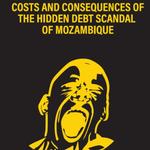How a $2 billion hidden and corrupt loan has cost $11 billion and increased poverty
In 2013, bankers in Europe, businesspeople based in the Middle East, and senior politicians and public servants in Mozambique conspired to organise a USD 2 billion loan to Mozambique – an incredible 12% of GDP of one of the poorest countries in the world. The loan was kept hidden. None of the borrowed money, except bribes, went to Mozambique, and there were no services or products of benefit to the Mozambican people.
The knock-on effects of such a huge corruption scandal may already have cost Mozambique at least USD 11 billion – nearly the country’s entire 2016 GDP – and almost 2 million people have been pushed into poverty. If Mozambique is forced to service this debt, there is USD 4 billion more to pay, on top of future damaging impacts.
In a new report about the corruption scandal, CMI senior researcher Aslak Jangård Orre and the Centro de Integridade Publica document the wide-ranging and detrimental economic, social, political and institutional costs of Mozambique's 'Hidden Debt Scandal'.
Summarised, the hidden debt and ensuing scandal impacted heavily on politics and institutions and led to:
- More contradictions and debilitating conflicts within the state and political system.
- Worse governance quality and weakened state institutions.
- Disrepute of the regime and government.
- A less democratic and more authoritarian country.
Publication

